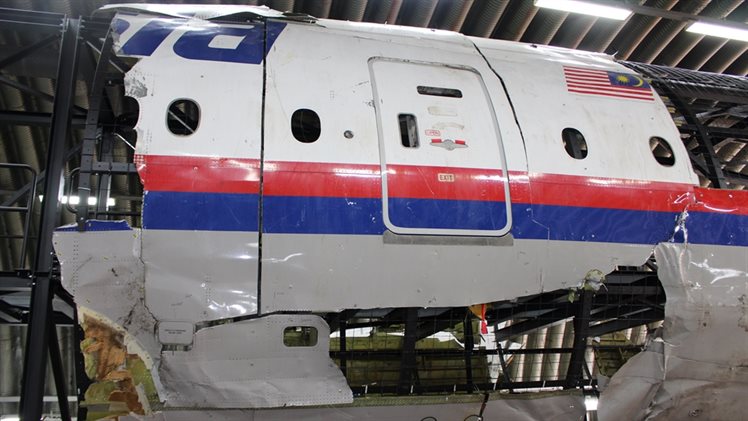Social media helps MH17 investigators identify Russian army unit
25 May, 2018
4 min read
By joining our newsletter, you agree to our Privacy Policy


Video and images posted on social media helped the team investigating the 2014 destruction of Malaysia Airlines flight MH17 to conclude the BUK missile that downed the Boeing 777 came from a Russian army unit.
The investigators said the BUK missile, fired from an area under the control of Russian separatists, came from the 53rd Anti Aircraft Missile brigade based in Kursk in the Russian Federation.
All 298 people on board the Boeing 777, including 38 Australians, died when it was shot down over Ukraine on July 17, 2014 while flying between Amsterdam and Kuala Lumpur.
A press conference in the Netherlands on Thursday showed how video and images posted on social media were used to establish a unique fingerprint that showed not only which BUK-TELAR launch platform was used in the attack but the route it took to get to Ukraine.
The investigation compared the information from social media with images from sources such as Google Street View to help establish the BUK-TELAR’s route and unique tell-tale signs on the vehicle to confirm its identity.
This video shows how the conclusion was reached:
[embed]https://www.youtube.com/watch?v=rhyd875Qtlg&feature=youtu.be[/embed]
The Joint Investigation Team (JIT) — which includes investigators from Australia, Belgium, Ukraine, Malaysia and the Netherlands — has been narrowing down the number of people it believes were involved in the atrocity from about 100 to “a few dozen”.
It says it is now in the final phase of the investigation but Dutch chief prosecutor Fred Westerbeke could not say when the case would be prosecuted in a Netherlands court.
Westerbeke said substantial progress had been made despite the complexity of the investigation and it had other information it was not disclosing. Investigators have previously revealed the use of mobile phone locations, wiretaps, videos and witness statements to build their case.
“It can damage the investigation and the ultimate legal procedure if we make it clear to those responsible for this event – and those further involved – how much we know exactly,’’ he said. “. Therefore you will understand that the courtroom pre-eminently is the place where the Public Prosecution Service speaks out about the accusation of – and the burden of proof against – individual persons.”
Read: EU warns it expects states to co-operate on MH17
Investigators Thursday called on anybody with further information on the BUK-TELAR or the missile to contact them.
"Who formed part of the crew?,’’ asked the head of the National Investigation Service of the Dutch police, Wilbert Paulissen. “With which instruction did they set out? Who was responsible for the operational deployment of this BUK-TELAR on July 17, 2014?
“We are convinced that many people have this information. That may be members of the 53rd Brigade, but also relatives, friends or acquaintances. And even people who have nothing to do with the 53rd Brigade. Please do not keep that information to yourself but contact the JIT.”
The JIT determined in 2016 that MH17 was downed by a BUK missile. Two parts of the missile were found in the Eastern Ukraine —a part of the exhaust known as a venturi and a part of the casing — with hand-written and hand-engraved numbers on them.
It has since found that part of the number related to the number of the missile engine and others indicated the manufacturer, the Dolgoprudny Research and Manufacturing Enterprise in Moscow, and the year of production, 1986.
“All findings from this forensic investigation confirm the earlier conclusion of the JIT that flight MH17 was shot down by a 9M38 series BUK missile,’’ Australian Federal Police commander Jennifer Hurst said.
Hurst said investigators wanted to talk to anybody who recognized the hand-writing on the venturi, any information about the numbers on the venturi and casing or to which unit the missile was delivered.
Russia has consistently denied any involvement in the attack but investigators say their case does not rely on the Russian response.
Australia Foreign Minister Julie Bishop expressed concern about the findings
"That a sophisticated weapon belonging to the Russian Army was dispatched and used to shoot down a civilian aircraft should be of grave international concern,'' she said. "We are discussing these findings with our partners and considering our options.
"We have full confidence in the independence of the JIT and in its thorough investigation."
Get the latest news and updates straight to your inbox
No spam, no hassle, no fuss, just airline news direct to you.
By joining our newsletter, you agree to our Privacy Policy
Find us on social media
Comments
No comments yet, be the first to write one.

